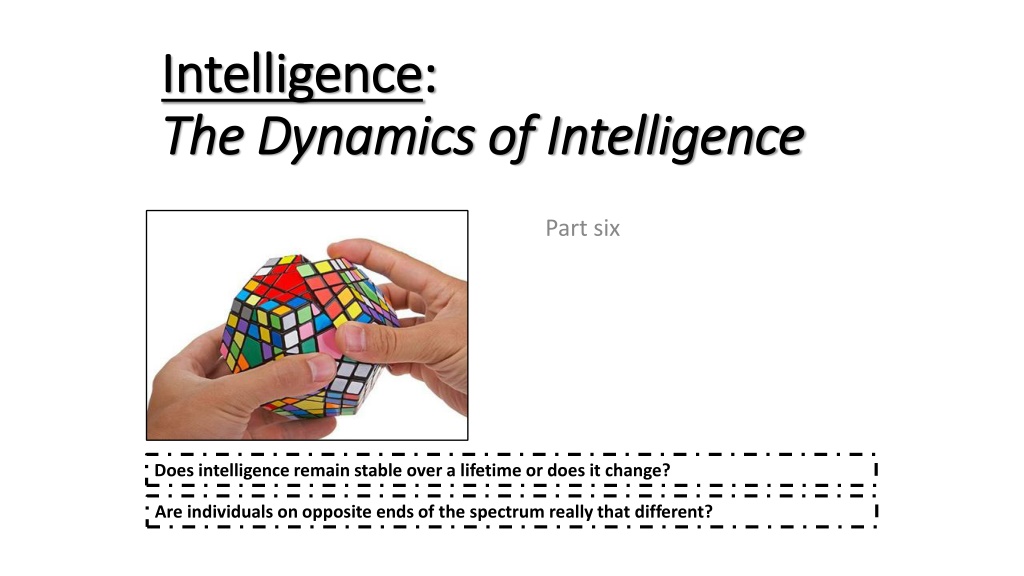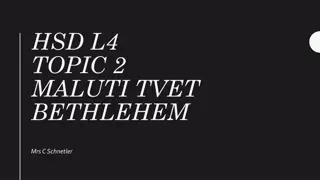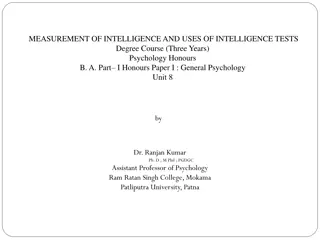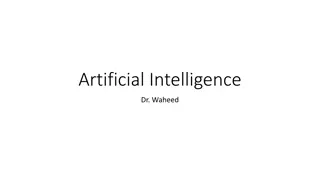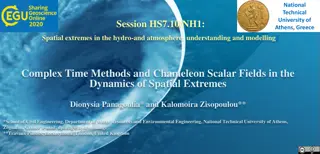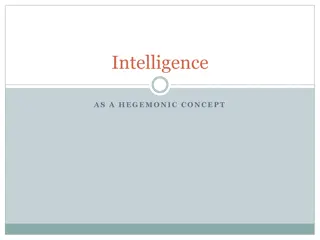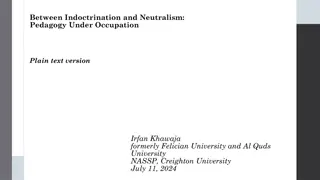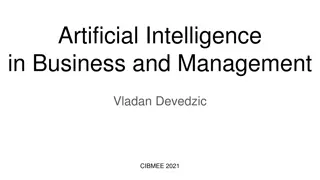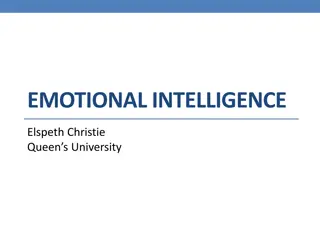Understanding the Dynamics and Extremes of Intelligence
Intelligence, as measured by performance on tests, shows stability and predictability from childhood to adulthood. High scoring adolescents often excel in early reading, with scores stabilizing around age 7. The extremes of intelligence manifest in conditions like Intellectual Disability/Developmental Delay, with common biological causes such as Down Syndrome and environmental factors like lead poisoning. However, intelligence scores tend to increase in consistency with age, reflecting the complex interplay of genetic and environmental influences.
Download Presentation

Please find below an Image/Link to download the presentation.
The content on the website is provided AS IS for your information and personal use only. It may not be sold, licensed, or shared on other websites without obtaining consent from the author. Download presentation by click this link. If you encounter any issues during the download, it is possible that the publisher has removed the file from their server.
E N D
Presentation Transcript
Intelligence Intelligence: : The Dynamics of Intelligence The Dynamics of Intelligence http://1.bp.blogspot.com/-xovUgKjvvRk/TxyOSUG5sKI/AAAAAAAABZI/BaF2o6DrSos/s400/12-surface-iq-pentagon-11.jpg Part six Does intelligence remain stable over a lifetime or does it change? Are individuals on opposite ends of the spectrum really that different?
Intelligence Intelligence: : The Dynamics The Dynamics By age 4, children s performance on intelligence tests begins to predict their adolescent & adult scores High scoring adolescents tend to have been early readers Intelligence scores become stable after about 7 years of age In numerous studies, consistency of intelligence scores has been determined to increase with age
Intelligence Intelligence: : The Extremes of Intelligence The Extremes of Intelligence Part seven
Intelligence Intelligence: : The Extremes The Extremes (Low) (Low) Intellectual Disability/Developmentally Delayed (Mental Retardation) A condition characterized by limited mental capacity Indicated by a low test score (<70) and difficulty adapting to the normal demands of independent living; before the age of 18 1-3% of the population An estimated 6.2 to 7.5 million Americans Male to female ratio?
Intelligence Intelligence: : The Extremes The Extremes (Low) (Low) The three most common biological causes Down Syndrome A condition of intellectual disability & associated physical disorders 47 chromosomes, as opposed to 46 (an extra 21st) Fetal Alcohol Syndrome Fragile X Syndrome A condition in which a male has a defect in a gene on the X chromosome of the twenty- third pair Leads to a deficiency in a protein needed for brain development
Intelligence Intelligence: : The Extremes The Extremes (Low) (Low) Other Causes? Environmental Factors Lead poisoning Prenatal exposure to mercury Poor nutrition Lack of mental stimulation Familial Intellectual Disabilities A developmental delay related to living in poverty; generally produces relatively intellectual disability.
Intelligence Intelligence: : The Extremes The Extremes (High) (High) Definitions of giftedness (>130) vary considerably 2% of the population is >130 (gifted) % of the population >140-145 (genius) Misconceptions about the high extreme Early ripe, early rot Socially awkward, physically weak, more likely to suffer from mental illness, etc. The mad scientists or evil geniuses
Intelligence Intelligence: : The Extremes The Extremes (High) (High) http://www.nndb.com/people/478/000165980/lewis-terman-1-sized.jpg Lewis Terman (1921) Terman s Termites Longitudinal Study of 1,528 children IQs ranging from 130 200 Findings Gifted individuals tend to be above average in Physical health Emotional adjustment Mental health Social maturity
http://www.nature.com/nature/journal/v471/n7339/images/471443a-i1.0.jpghttp://www.nature.com/nature/journal/v471/n7339/images/471443a-i1.0.jpg Part eight Intelligence Intelligence: : Heredity & Environment Heredity & Environment
Intelligence Intelligence: : Heredity & Environment Heredity & Environment Early pioneers of intelligence Maintained the nature view of intelligence Today s nature theorists Assert that a child s intelligence CANNOT be changed; genetic destiny Many argue that this downplays the value of special education programs for underprivileged groups
Intelligence Intelligence: : Heredity & Environment Heredity & Environment Today s nurturetheorists Assert that traits with a strong genetic component are not necessarily unchangeable Argue that even MORE funds be allocated for remedial programs, especially in lower- income areas http://blog.timesunion.com/cohoes/files/2010/08/head-start1.jpg
Evidence for Hereditary Evidence for Hereditary Influence Influence
Intelligence Intelligence: : Heredity & Environment Heredity & Environment Family Studies Can determine only whether genetic influence on a trait is plausible Twin Studies The average correlation for identical twins is +0.86 The average correlation for fraternal twins is +0.60 Adoption Studies Studies indicate that there is more than chance similarity between adopted children and their biological parents
Intelligence Intelligence: : Heredity & Environment Heredity & Environment Heritability Ratio An estimate of the proportion of trait variability in a population that is determined by variations in genetic inheritance Can be estimated for any trait 90% for height 85% for weight Intelligence?
Intelligence Intelligence: : Heredity & Environment Heredity & Environment https://encrypted-tbn0.gstatic.com/images?q=tbn:ANd9GcSiZSSLmyX6tfAevwE4tOFtvJOP0PiYIoLAtxn9TO315EFr-Q1O Heritability estimates for intelligence vary considerably High Estimate: 80% 20% of the variation in intelligence is attributable to environmental factors Low Estimate: 40% 60% of the variation in intelligence is attributable to environmental factors
Intelligence Intelligence: : Heredity & Environment Heredity & Environment Limitations of heritability estimates Heritability is a group statistic; CANNOT be meaningfully applied to individuals A trait s heritability may vary from one group to another There really is no single fixed value that represents any true, constant value for the heritability of IQ or anything else
Evidence for Environmental Evidence for Environmental Influence Influence
Intelligence Intelligence: : Heredity & Environment Heredity & Environment Twin Studies The average correlation for identical twins raised together is +0.86 The average correlation for identical twins raised apart is +0.72 Adoption Studies There is some resemblance between adoptive parents and their children Siblings reared together are more similar in IQ than siblings reared apart (0.48, as opposed to 0.23)
Intelligence Intelligence: : Heredity & Environment Heredity & Environment Sandra Scarr (1991) Reaction-Range Model Heredity sets certain limits on intelligence and environmental factors determine where individuals fall within these limits Genetic makeup places an upper limit on a person s IQ Cannot be exceeded; even when environment is ideal Genetic makeup places a lower limit on a person s IQ except in extreme cases
